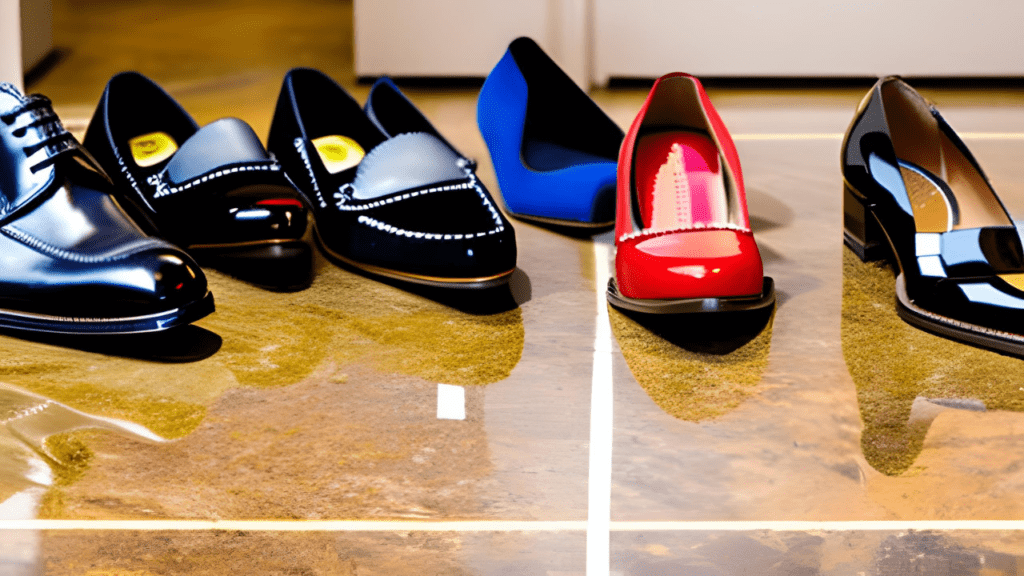
Shipping footwear can be a challenging task, as different types of shoes require different types of packaging, handling, and shipping methods. Among all types of footwear, some are notoriously difficult to ship due to their size, weight, shape, or material. In this article, we will discuss the most difficult to ship footwear and provide tips on how to avoid common shipping mistakes.
Boots
Boots are one of the most difficult types of footwear to ship, especially if they are tall or have a bulky shape. Boots can easily lose their shape or get scuffed during transit if they are not packaged properly. To avoid these issues, it is important to use a sturdy box that can accommodate the size of the boots without crushing them. Additionally, stuffing the boots with newspaper or tissue paper can help maintain their shape and prevent them from shifting inside the box. When shipping boots, it is also important to label the box as “fragile” or “handle with care” to ensure that the courier takes extra precautions during transit.
High Heels
High heels can be difficult to ship due to their delicate structure and height. When shipping high heels, it is important to use a box that is slightly larger than the size of the shoes to accommodate any extra padding. Wrapping the shoes with bubble wrap or tissue paper can also help protect them from damage during transit. It is important to note that high heels should not be shipped in their original shoebox, as these boxes are not designed to withstand the rigors of shipping.
Running Shoes
Running shoes are another type of footwear that can be difficult to ship due to their weight and size. When shipping running shoes, it is important to choose a box that is strong enough to hold the weight of the shoes without collapsing. Additionally, it is recommended to use extra padding, such as bubble wrap or foam, to protect the shoes from damage during transit. It is also important to avoid using plastic bags or containers to ship running shoes, as these materials can trap moisture and damage the shoes.
Sandals
Sandals are relatively easy to ship compared to other types of footwear, but they still require proper packaging and handling to ensure safe delivery. When shipping sandals, it is recommended to wrap each shoe separately in tissue paper or bubble wrap to prevent them from scratching or rubbing against each other. Using a box that is slightly larger than the size of the shoes and adding extra padding can also help prevent damage during transit.
In general, when shipping any type of footwear, it is important to avoid common shipping mistakes that can lead to damage or loss of the shoes. Some of the most common mistakes to avoid include:
- Choosing the wrong shipping method: Different couriers have different requirements and rates for shipping footwear, depending on the weight, size, and destination of the package. It is important to research the available options and choose the most appropriate shipping method based on your needs and budget.
- Improper packaging: Shoes should be packaged in a sturdy box that is appropriate for their size and weight. Additionally, it is important to use adequate padding, such as bubble wrap, foam, or tissue paper, to protect the shoes from damage during transit.
- Insufficient labeling: Labeling the package with the correct address and shipping information is crucial to ensure that the shoes are delivered to the right destination. It is also recommended to label the package as “fragile” or “handle with care” to alert the courier to the delicate nature of the contents.
- Not insuring the package: Shipping insurance can provide peace of mind in case the shoes are lost, stolen, or damaged during transit. Some couriers offer insurance options, but it is important to check the terms and rates carefully before making a decision.
In terms of courier requirements and rates, different couriers have different policies and pricing structures for shipping footwear. For example, FedEx offers several shipping options for shoes, including FedEx Ground, FedEx Express, and FedEx Home Delivery. The cost of shipping varies depending on the weight, size, and destination of the package. Additionally, FedEx requires that shoes are packaged in a sturdy box with adequate padding, and that the package is properly labeled with the correct address and shipping information.
USPS is another popular courier for shipping footwear, and offers several options including Priority Mail, First-Class Mail, and Priority Mail Express. The cost of shipping depends on the weight and size of the package, as well as the destination. USPS requires that shoes are packaged securely in a sturdy box, and that the package is labeled with the correct address and shipping information.
UPS is also a popular choice for shipping footwear, and offers several options including UPS Ground, UPS 2nd Day Air, and UPS Next Day Air. The cost of shipping depends on the weight, size, and destination of the package. UPS requires that shoes are packaged in a sturdy box with adequate padding, and that the package is labeled with the correct address and shipping information.
In conclusion, shipping footwear can be a challenging task, especially for certain types of shoes that require special handling and packaging. When shipping shoes, it is important to choose the right courier and shipping method, package the shoes securely with adequate padding, and label the package correctly with the correct address and shipping information. By avoiding common shipping mistakes and following best practices, you can ensure that your shoes arrive at their destination safely and in good condition.
